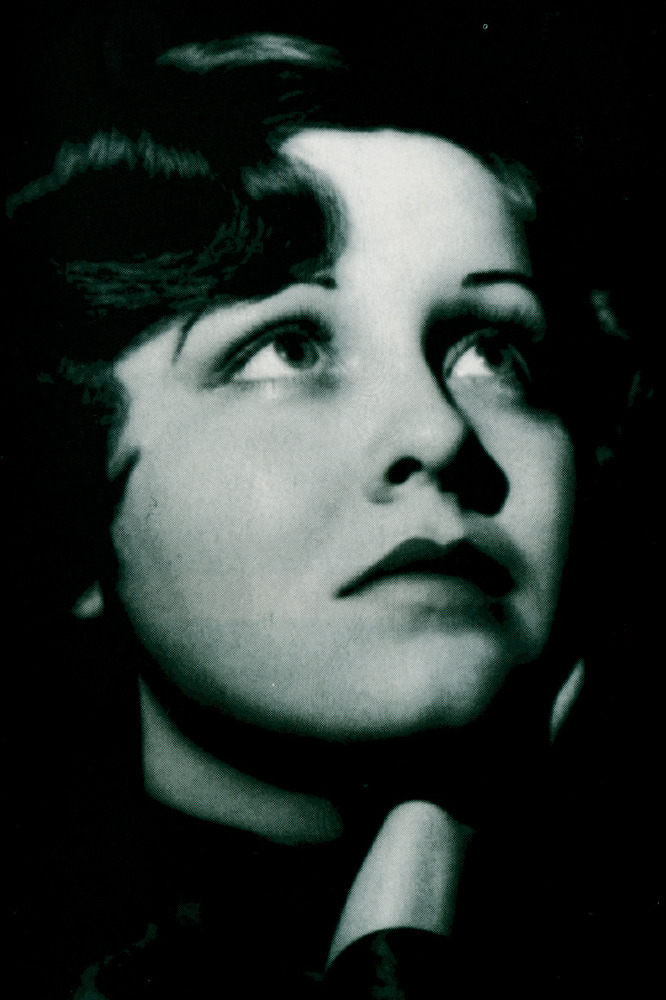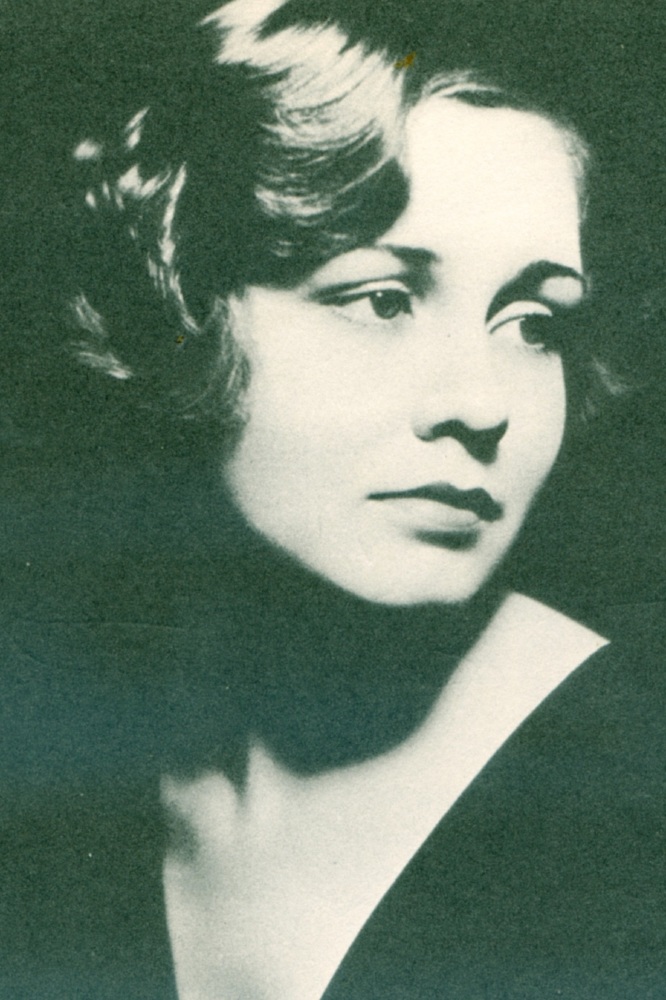Lost since 1972, and discovered in Wales, My Life with John Steinbeck allows Gwyn Steinbeck, John Steinbeck’s second wife and the mother of his two children, to tell her story for the first time and show the complexities of his character.

Gwyn Steinbeck tells her story / Photo Credit: Maurice Seymour
Hatred
John Steinbeck could hate with a vengeance. Gwyn’s memoir relates how when she finally left him he was stunned – and he never forgave her.
Steinbeck’s resolute and unfair attack on his second wife through his lawyers in the New York Family Court in 1962, with his third wife Elaine alongside him, reeked of hatred. Gwyn had custody of their sons who lived with her. She was awarded $22.50 a week for each boy, aged 16 and 14 at that time, but her maintenance was reduced to $320 per month. These adjustments amounted to $160 or $1300 at today’s prices although John still had to pay for his sons’ education. At this time his novels were selling in millions.
Steinbeck died in 1968 and Gwyn was without maintenance until her death in 1975, living in reduced circumstances with extreme asthma. She never remarried. Following her death, the opportunity was taken to write her out of the introductions to the millions of Steinbeck books. Look at any copy today and these clearly mention both his first and third wives Carol and Elaine, but not Gwyn.
Revenge
As a writer, he had a unique way of getting back at her – demonising her as the Cathy Ames/Kate Trask character in his blockbuster East of Eden. He says of her “her life is one of revenge on other people...” Setting some record for female villainy, Cathy sleeps, at fourteen, with her teacher who commits suicide on an altar, incinerates her parents, sleeps with her brother-in-law, falls pregnant with his two sons, and then abandons the boys to her husband’s care after shooting and wounding him! She then starts a quiet, twisted life as a whorehouse hooker who cleverly poisons the madam and takes over. A very nasty lady. Steinbeck acknowledged to his publisher, Pascal Covici, that she was based on Gwyn
Envy
Steinbeck was envious of Ernest Hemingway, who had more wives (four to John’s three), and received his Nobel Prize in 1954, eight years earlier than Steinbeck. It may just be possible that Hemingway’s death in 1961, triggered a belated Nobel award in 1962 to John Steinbeck. This is perhaps unfair since Steinbeck’s canon of work far exceeded Hemingway’s.
He envied Gwyn, a talented singer when she wrote songs and arranged a demo recording. He angrily told Gwyn “I don’t know why the f*** you feel you have got to get in competition with me!” She never published her songs.
Partying
The couple had a wild time partying in New York snowstorms (1947) and in Big Apple spots such as Club 21. Much partying took place at Ricketts’s lab in Monterey, albeit Gwyn confirmed their relationship was “a little crowded”, as she shared her husband with Ricketts, Steinbeck’s soulmate until Ricketts’s death in a car/train smash in 1948.
Their 1943 wedding bash in New Orleans was legendary and there were excursions to Denmark and Monterey. When they partied in Paris, John had Gwyn to himself and was temporarily happy, avoiding parental responsibility.
Christmas was a special time for John Steinbeck and the couple hosted lavish and heavy drinking parties for over a hundred or more guests at their home in New York.
Passion, womanising and consequences
Steinbeck was a bear of a man. He made love without protection, saying it made him impotent. Her Svengali, for several years passion outweighed the downside of their relationship. If Steinbeck ever thought Gwyn had entrapped him by having children he was a contributor by choice.
Gwyn describes two abortions in her memoir and Steinbeck wanted her to abort their second son, having proved he could father a child. Her memoir describes Steinbeck shoving her, several months pregnant, downstairs in front of gaping visitors. It is difficult to reconcile such behaviour from a writer who created such sensitive stories as Chrysanthemum and The Red Pony, albeit these works were from a decade earlier.
She relates how, on their wedding night, John rang New York and spoke to a lady for more than an hour. Gwyn believed the two met regularly, describing these meetings as “matinees”, during John’s frequent unexplained absences from home.

The truth according to Steinbeck
John Steinbeck was an iconic storyteller – a genius and wordsmith. His novels encouraged millions of ordinary Americans to read about understandable subjects, farm and family life, small towns, landscape and the environment. He wooed Gwyn, often describing her as a redhead, with two dozen poems soon after they met, but at home his word was the truth. He would say “I have very strong morals, but I change my morals to fit the situation.” When confronted about a lie he would say “Gwyn, for the moment, that is the truth.”
Boorishness and insensitivity
Gwyn reveals she had two difficult Caesarean deliveries and Steinbeck is shown to be insensitive on both occasions. Once, immediately after the birth, he amazingly said that they would soon be back in bed together - unbelievably crass. He also said when their second son John Jnr was dying and had screamed all night long, “I wish to Christ he would die, he is taking up too much of your f***ing time.”
At that point, she relates that her love for John Steinbeck died.
Pigheadedness (Pigasus)
Steinbeck had a personal stamp, Pigasus, with its own motto, Ad astra per alia porci, (to the stars on the wings of a pig). This proved apt on occasion, as when he inadvertently set fire to their New York home, putting still burning ashes, into a cardboard box. The house caught fire and the alarm was raised by Gwyn’s mother’s dog Lassie. John was locked outside in a blizzard afterwards, in just a pyjama top, illuminated to all the neighbours while Gwyn and her mother fought the fire. He sulked and spoke to no-one for three days afterwards, his first words then being “when is your mother going home?”
To prove men cannot (or will not) read maps, John drove hours one day, despite Gwyn’s protests, away from (instead of to) Las Vegas, Nevada, ending up hundreds of miles away in a different state, in Las Vegas, New Mexico!
Love of food, drink and travel
John Steinbeck loved to explore and the couple had good times in the wild country between California and central Mexico. They loved looking at ruins, historic buildings and Mexican art. They enjoyed Mexican food, especially chilli.
Love of animals
Steinbeck also had a great love of dogs, one of whom he immortalised in his book Travels with Charley. Charley Dog was a tall and gregarious French poodle, and his sole companion on an extensive American road trip taken to ‘rediscover America’ made in 1962. He also kept a rat called Burgess, named after veteran actor Burgess Meredith, for years, and Gwyn recalled how he broke down in tears when his pet rat died.
An extraordinary, but flawed man
John Steinbeck was a wonderfully talented storyteller, but there is no doubt that his marriage to Gwyn Conger Steinbeck did irreparable harm to her and their sons. As Gwyn claims, “His love was a love of suspicion that was part of his overall complexity. He had the unhappy life of suffering revenge and jealousy. He tried hard to fight it but could not change.”
-

My Life with John Steinbeck: The story of John Steinbeck’s forgotten wife by Gwyn Steinbeck, as told to Douglas G. Brown (HB: £19.99, PB: £11.99, e-book: £4.99) is available from http://bit.ly/MLWJSpaperback . Find out more here: www.MyLifeWithJohnSteinbeck.com

